Never Touch This When Sitting on a Plane, Experts Warn
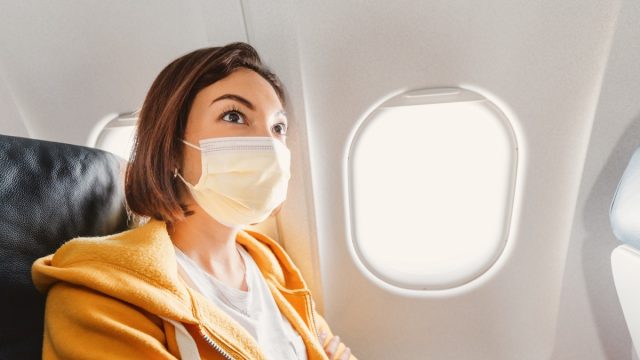
As you’ve probably already noticed, airports and planes are more crowded than ever right now. During the pandemic and amid holiday travel, you should be more adamant about keeping six feet away from others in bathroom lines, and washing your hands for at least 20 seconds. But in a compact space, like your airplane seat, there’s no telling what kinds of germs can travel. With that in mind, experts have emphasized that no matter how much you’ve wiped down your area, there’s one thing that you should avoid putting your hands on at all costs, especially after touching your seat. Read on to find out what to steer clear of on your next flight.
RELATED: If You’re Offered This on a Plane, Just Say No, Flight Attendants Warn.
Never touch your face after touching your seat.
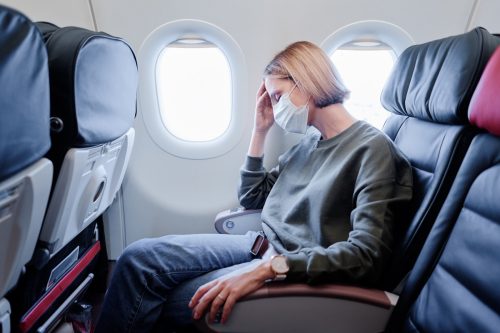
While you can’t predict what germs you may come in contact with on a plane, you should try to keep your seat and space as clean as possible. In fact, before taking your seat, you can sanitize the armrests as an extra precaution. But once you’ve finally gotten comfortable, there’s one particular precaution you should be taking throughout your entire flight, especially after you’ve touched your seat.
“My rule of thumb is I never put my hands in my mouth or near my face,” flight attendant Linda Ferguson told Reader’s Digest about her protocols on a plane.
RELATED: Never Wear This Type of Clothing on a Plane, Experts Warn.
Keep your hands clean and avoid touching your face at all costs.
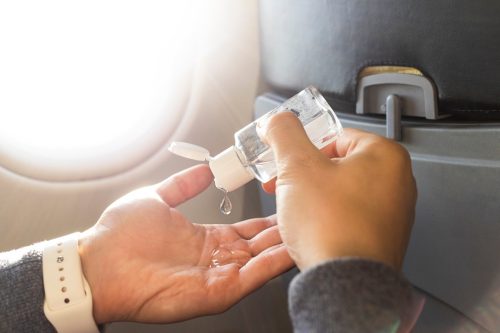
When disinfecting hard surfaces during your next flight, keep in mind that your seat may not need to be wiped down. In 2020, Aaron Milstone, MD, associate hospital epidemiologist at the Johns Hopkins Hospital, told The New York Times that with upholstered seats, using a wipe simply results in a wet seat, essentially causing more germs to spread.
“It’s not bad to wipe down the area around you, but it’s worth remembering that the coronavirus is not going to jump off the seat and get into your mouth,” he explained. “People should be more careful of touching something dirty then putting their hands on their faces.”
Andrew Mehle, PhD, associate professor of medical microbiology and immunology at the University of Wisconsin Madison, also emphasized to the NYT how keeping your hands clean when traveling can make all the difference. “It’s just as important to think about where your hands have been and to wash your hands,” he explained. Even clean, however, keep them off your face.
Research shows that the window seat may be the safest spot from germs.
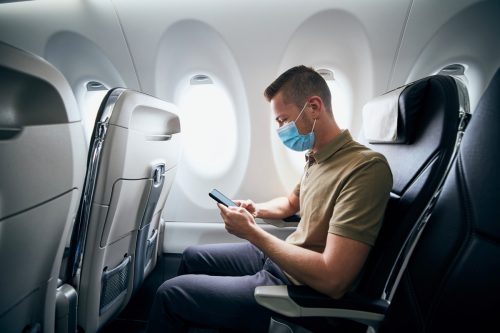
Studies have continued to show how easily germs can move on a plane. In a 2018 study in the Proceedings of the National Academy of Sciences, researchers set out to discover how frequently passengers are exposed to infectious diseases. Researcher Vicki Stover Hertzberg and her team flew on 10 transcontinental flights, with each one being about three to five hours long. The team then collected 229 environmental samples of the air and surfaces on the plane. Some of the movements documented throughout each flight included if passengers never left their seats or if they got up two or more times.
Results showed that passengers sitting at a window seat had the least contact with anyone on the flight who was potentially sick. Compared to those in a middle or aisle seat, however, passengers in the window seat also moved around the least. “Book a window seat, try not to move during the flight, stay hydrated, and keep your hands away from your face,” Hertzberg told the NYT.
RELATED: For more travel advice delivered straight to your inbox, sign up for our daily newsletter.
There are many travel rules to keep in mind for the sake of your health.
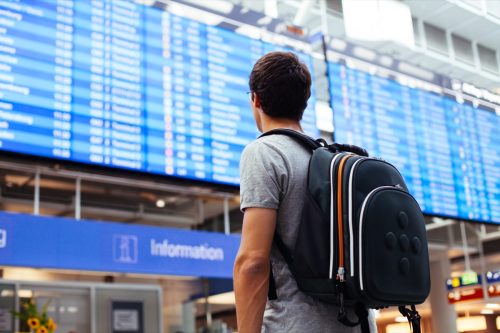
Touching your face isn’t the only travel rule to consider, especially during a pandemic. While speaking to the Cleveland Clinic, pulmonary and critical care physician Joseph Khabbaza, MD, expressed some things to think about when taking a trip. He noted that you should keep in mind how much COVID-19 is spreading at your travel destination, how much the disease is spreading in your community, and if you’re living with someone who’s at high risk for COVID.
“As long as we apply our everyday precautions to our travels, the risks can be minimized significantly,” he explained. “We can do this by maintaining distance and wearing a mask around those who are outside of our small circles, keeping our hands sanitized and not touching our eyes, nose, or mouth if our hands are not clean. Being in environments where mask compliance is strong is also important in minimizing risk and keeping occurrences of COVID-19 transmission low.”